A white horse stark against a black beach. A family pushes a car through floodwaters in Chiayi County. People play on a beach in Pingtung County, as a nuclear power plant looms in the background.
These are just some of the powerful images on display as part of Shen Chao-liang’s (沈昭良) Drifting (Overture) exhibition, currently on display at AKI Gallery in Taipei.
For the first time in Shen’s decorated career, his photography seeks to speak to broader, multi-layered issues within the fabric of Taiwanese society.
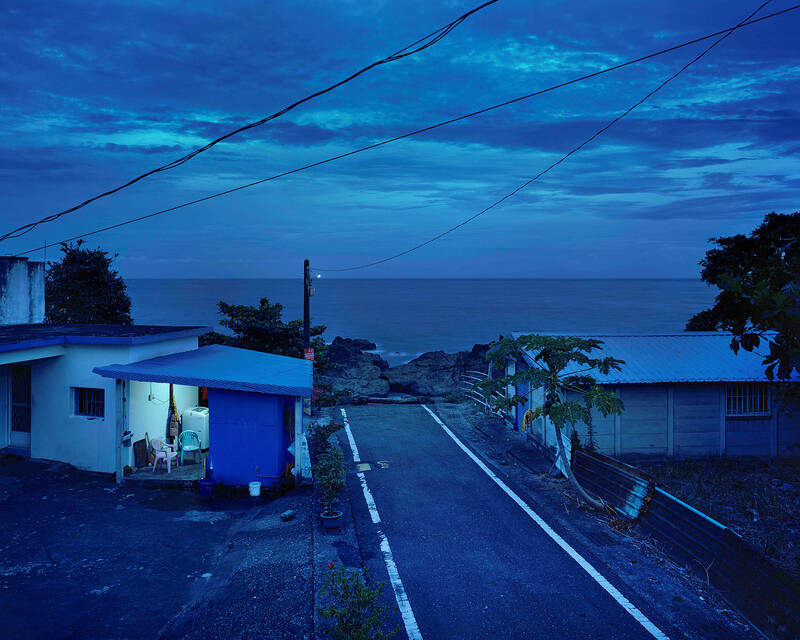
Photo courtesy of the artist and AKI Gallery
The photographs look towards history, national identity, ecological changes and more to create a collection of images speaking on the country’s contemporary context.
“Can I use landscapes to describe a country?” Shen said to an assembled panel last Saturday at AKI Gallery.
‘THEY ARE SILENT’
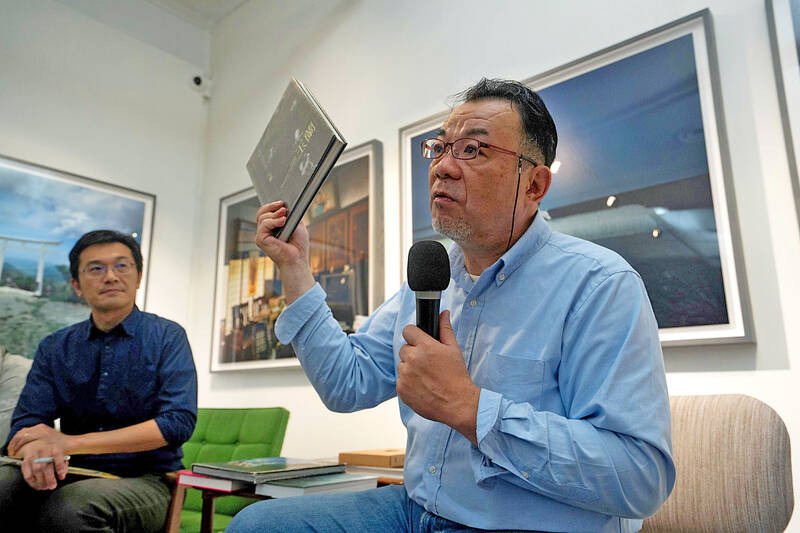
Photo: Lery Hiciano, Taipei Times
Shen’s resume is impressive — previous projects have led him to exhibitions in Taiwan, Japan and South Korea, on subjects as diverse as local entertainers to earthquake survivors and religious festivals.
But with those in-depth projects came a need to embed himself with his subjects in order to communicate their stories.
In a stark departure from his previous work, like Stage, Tsukiji Fish Market (築地魚市場) or Taiwan Vaudeville Troupes (台灣綜藝團), the photographs in Drifting (Overture) do not center people. In his words, “they are silent.”
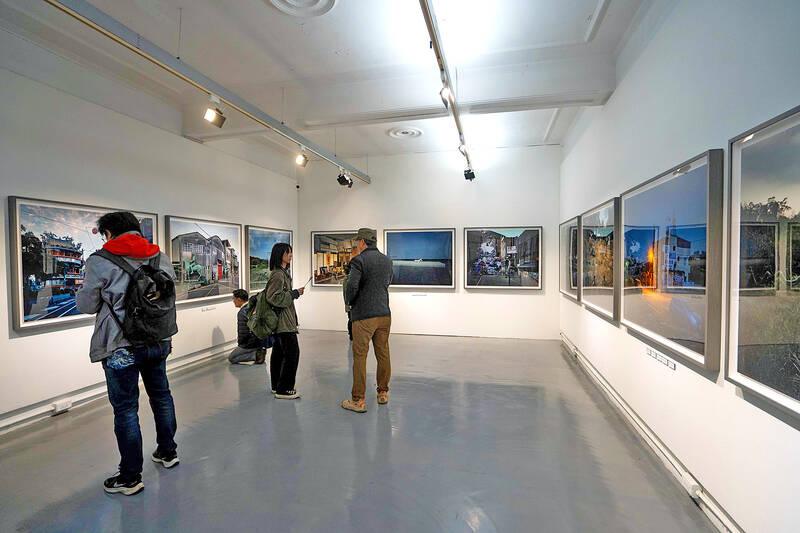
Photo: Lery Hiciano, Taipei Times
“The older I get, the less I want to talk to people,” Shen said to audience laughter.
The lack of people in the photographs speaks to the environment of Taiwan, both human-made and naturally-occurring, the country’s changing identity and anxieties about what it means to be Taiwanese.
This project took 10 years to complete, spanning three presidential administrations, a global pandemic, Taiwan’s entry into mainstream international political debates, and much more.

Photo courtesy of the artist and AKI Gallery
For those unaware of Taiwan’s history, the photographs may seem to lack a narrative, but the length of time spent on this project speaks to the artists’ attentiveness and the care placed in selecting each image.
For example, one photograph of an empty street in New Taipei City shows two larger-than-life statues of Chiang Kai-shek (蔣介石) and Chiang Ching-kuo (蔣經國).
To those unfamiliar with the ongoing controversies around the Chiang family and the debate over transitional justice, it may be difficult to identify their importance at first sight, but the solitary statues, devoid of attention in an anonymous corner of the city but still in immaculate condition, speak to how modern society continues to grapple with the two former leaders.

Photo courtesy of the artist and AKI Gallery
‘SEARCH FOR DIRECTIONS’
Touching on Taiwan’s history, including issues like the White Terror period of martial law, Shen said, “The Taiwanese experience is like a boat searching for directions.”
The controversies around the Chiang family are emblematic of that search.
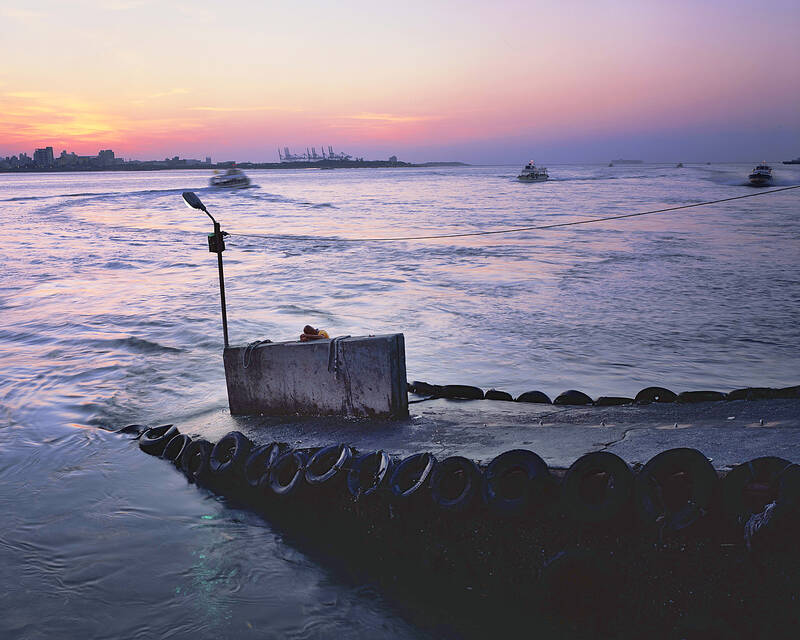
Photo courtesy of the artist and AKI Gallery
Shen’s fellow panelist asked the artist about the lack of photographs touching on COVID-19, saying the empty images “feel like they’ve been taken after a catastrophe.”
The pandemic led to him reflecting on Taiwan’s past, present and future, the artist said, adding that he never stopped waking up early to photograph his surroundings.
When asked by the Taipei Times when he knows he has taken enough photographs to consider a project completed, Shen said that his goal was to move away from his former photojournalist background and desire to view his photographs “impartially” to communicate his story.
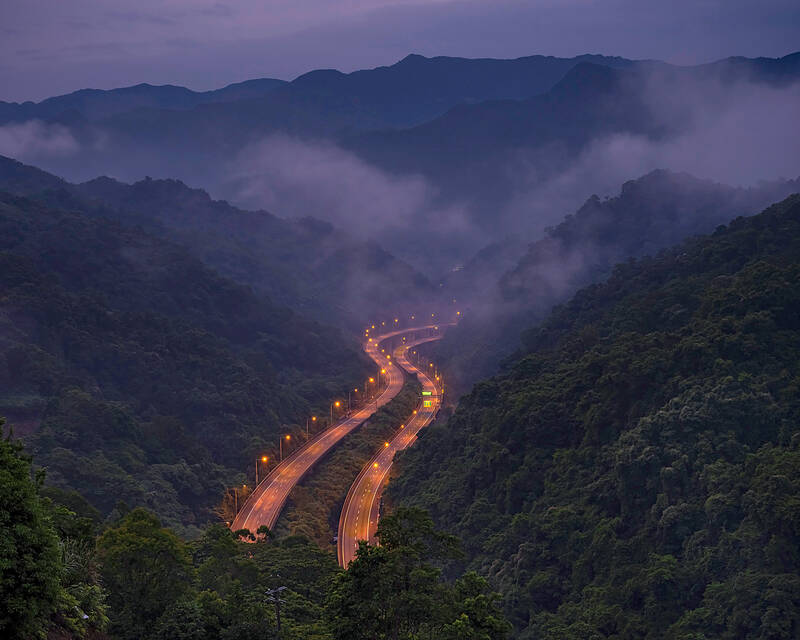
Photo courtesy of the artist and AKI Gallery
When asked how a photographer can look at their own work objectively, Shen said that objectivity and subjectivity are far less important than perspective.
Comparing it to photojournalism, where a photographer takes 100 photographs only to have one ultimately selected by the newspaper for a story, Shen asked rhetorically, “is that process objective?”
“There is no objective, subjective or absolute.”
To Shen, photography is about expressing his own ideas and meeting his own needs.
“What are you trying to say? You cannot lose your perspective in the search for objectivity.”
The exhibition’s brochure says that the “invisible” truths of history “shape our destiny and potential visions.”
Shen, one can say, makes these invisible truths visible.
One can see the invisible in a loaded image of an empty room filled with mementos and paperwork of bygone eras, a gray industrial facility nestled within green mountains or in the silhouettes of excavators digging through the rubble caused by an earthquake.
All these and more are now on display as part of Drifting (Overture).
“I wanted to use landscapes to unleash the essence of photography,” Shen said.

The People’s Republic of China (PRC) last week offered us a glimpse of the violence it plans against Taiwan, with two days of blockade drills conducted around the nation and live-fire exercises not far away in the East China Sea. The PRC said it had practiced hitting “simulated targets of key ports and energy facilities.” Taiwan confirmed on Thursday that PRC Coast Guard ships were directed by the its Eastern Theater Command, meaning that they are assumed to be military assets in a confrontation. Because of this, the number of assets available to the PRC navy is far, far bigger

The 1990s were a turbulent time for the Chinese Nationalist Party’s (KMT) patronage factions. For a look at how they formed, check out the March 2 “Deep Dives.” In the boom years of the 1980s and 1990s the factions amassed fortunes from corruption, access to the levers of local government and prime access to property. They also moved into industries like construction and the gravel business, devastating river ecosystems while the governments they controlled looked the other way. By this period, the factions had largely carved out geographical feifdoms in the local jurisdictions the national KMT restrained them to. For example,

The remains of this Japanese-era trail designed to protect the camphor industry make for a scenic day-hike, a fascinating overnight hike or a challenging multi-day adventure Maolin District (茂林) in Kaohsiung is well known for beautiful roadside scenery, waterfalls, the annual butterfly migration and indigenous culture. A lesser known but worthwhile destination here lies along the very top of the valley: the Liugui Security Path (六龜警備道). This relic of the Japanese era once isolated the Maolin valley from the outside world but now serves to draw tourists in. The path originally ran for about 50km, but not all of this trail is still easily walkable. The nicest section for a simple day hike is the heavily trafficked southern section above Maolin and Wanshan (萬山) villages. Remains of
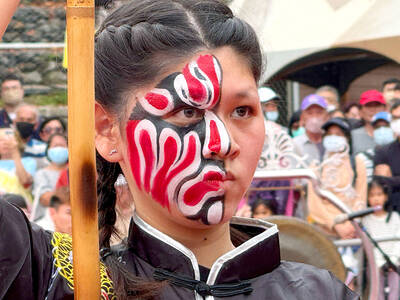
Shunxian Temple (順賢宮) is luxurious. Massive, exquisitely ornamented, in pristine condition and yet varnished by the passing of time. General manager Huang Wen-jeng (黃文正) points to a ceiling in a little anteroom: a splendid painting of a tiger stares at us from above. Wherever you walk, his eyes seem riveted on you. “When you pray or when you tribute money, he is still there, looking at you,” he says. But the tiger isn’t threatening — indeed, it’s there to protect locals. Not that they may need it because Neimen District (內門) in Kaohsiung has a martial tradition dating back centuries. On